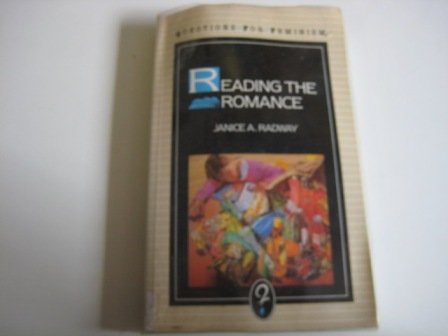

 |

|

The average rating for Reading the romance based on 2 reviews is 4 stars.
Review # 1 was written on 2020-08-22 00:00:00 Brandon Lee Brandon Lee4.5 ⭐️ Outdated for sure and limited in scope, but still a FASCINATING look at romance reading and an invaluable consideration, more broadly, of how to read popular fiction / mass-produced cultural objects. Also provides an opportunity to look at how far romance, as a genre, has come since 1984. |
Review # 2 was written on 2013-01-16 00:00:00 Anthony Hayes Anthony HayesMs Radway believes the romance novel (heterosexual; from the '70s and '80s) is not truly a novel; rather, she says, it is a myth. Like Joseph Campbell's hero monomyth (The Hero With a Thousand Faces), she attempts to track the path of the romance monomyth. She separates her analysis into two section: the act of reading the romance and the narrative structure of the romance. One major theme Radway presents centers around the idea that a reader not only enjoys her escapism, but she receives important emotional nurturance that is lacking in her reality. Also, she improves her understanding of herself and her world. Another major theme is a feminist one: the romance novel-myth is a paradox. At the same time women are reassuring themselves of the validity of their social role (wife, mother, homemaker: the typical end of an "ideal" romance during the era that she wrote her book) in patriarchal society, they are also expressing passive-aggressive discontent. Her field work is limited to a small group of homogeneous women, so her theorizing is seriously hindered. That said, she doesn't attempt to portray her study group as all encompassing either, so I could respect her study. I came away from this book excited, full of questions. The basic narrative structure of the romance--regardless if it is M/M, F/F, or M/F--has not changed, but many of the significant details have. (In her essay "Better Than Romance? Japanese BL Manga and the Subgenre of Male/Male Romantic Fiction," Dru Pagliassotti writes about Radway's break down of the romance's narrative elements, showing how they still apply today to the two literature forms of BL manga and M/M fiction [Boys' Love, pg 63].) How have the readers of romance changed? What motives them now? What are their desires? Their pleasures? How have the structures of the romance narrative re-defined themselves? Why did M/M novels burst onto the scene in the late '90s? What needs do they fulfill? Are romance novels still predominately following Radway's monomyth theory? Or...? Although I disagreed with many of Radway's assertions, she consistently maintains a balanced personal perspective toward her work; she never minimizes the importance of acknowledging the individuality of each reader. |
CAN'T FIND WHAT YOU'RE LOOKING FOR? CLICK HERE!!!